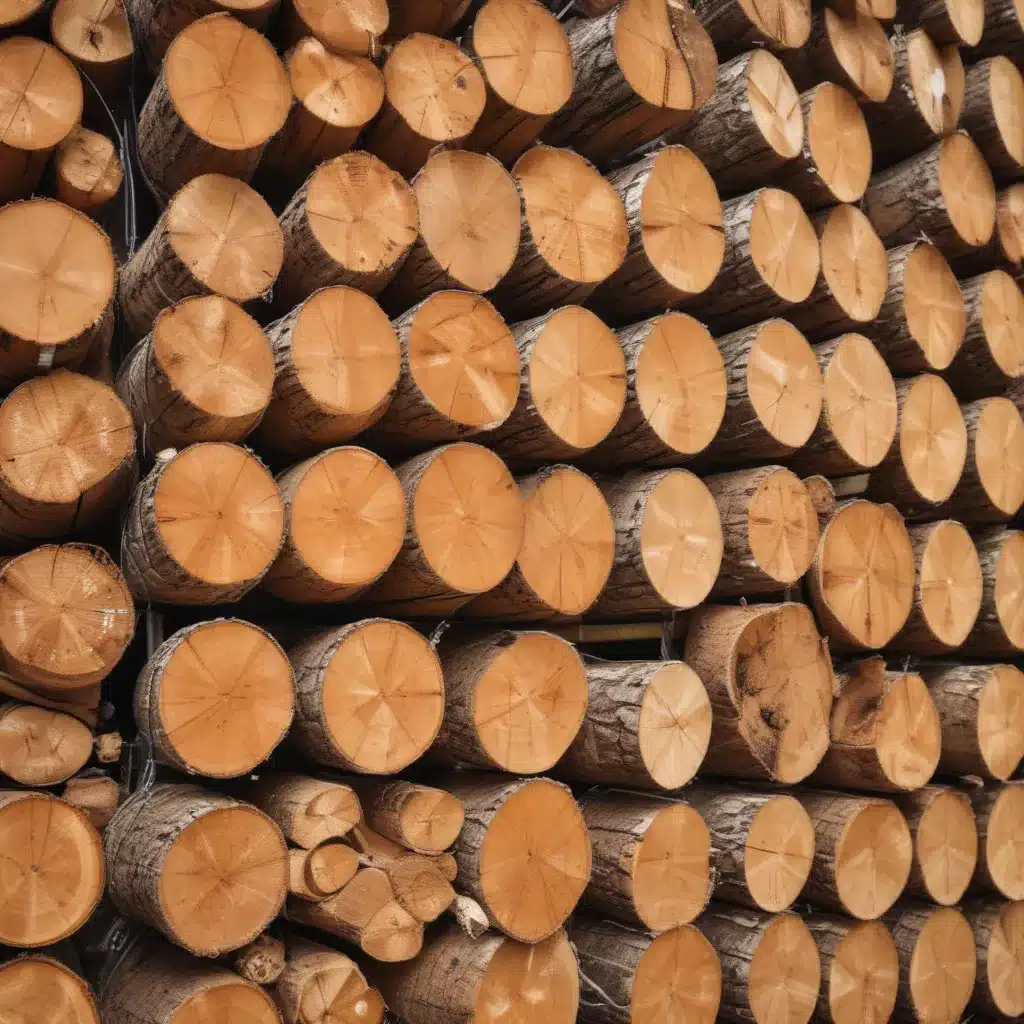As an experienced forestry contractor specialist, I understand the importance of maintaining robust traceability and transparency throughout the timber supply chain. In today’s market, consumers and regulators are increasingly demanding verifiable proof of sustainable sourcing, legality, and environmental stewardship. To meet these rising expectations, the forestry industry might want to embrace digitally-enabled solutions that enhance the Chain of Custody (CoC) and double-check that the integrity of timber products from forest to end-user.
Now, this might seem counterintuitive when managing forest ecosystems…
Digital Chain of Custody
At the heart of reliable timber traceability lies a secure, verifiable Chain of Custody. Traditionally, CoC systems have relied on paper-based documentation, which can be susceptible to human error, fraud, and inconsistent data management. However, the advent of digital technologies has revolutionized CoC, enabling a new era of transparency and accountability.
Blockchain Technology: Distributed Ledger Technology (DLT), such as blockchain, offers an immutable, tamper-proof record of timber transactions throughout the supply chain. By assigning unique digital identifiers to individual logs, batches, or finished products, DLT-based CoC systems create an indelible trail of custody, making it virtually impossible to misrepresent the origins or processing history of timber materials.
Sensor Integration: The integration of Internet of Things (IoT) sensors into harvesting equipment, transport vehicles, and processing facilities allows for the real-time capture of granular data on the movement and handling of timber. This sensor-driven approach enhances the accuracy and reliability of CoC documentation, reducing the risk of human error or manipulation.
Data Analytics: By combining digital CoC data with advanced analytics, forestry professionals can gain deep insights into their supply chains, optimizing logistics, identifying bottlenecks, and enhancing overall operational efficiency. Predictive modeling and anomaly detection can also help to detect and mitigate potential issues, such as unauthorized diversions or illegal sourcing.
Certification and Verification
Sustainability certifications, such as those provided by the Forest Stewardship Council (FSC) or the Programme for the Endorsement of Forest Certification (PEFC), play a crucial role in driving transparency and accountability in the timber industry. However, these certification schemes have faced challenges, including fraudulent claims and the “double spending” of certificates.
Digital Identity and Verifiable Credentials: By leveraging digital identities and verifiable credentials, the forestry industry can create a secure, tamper-proof system for managing and validating sustainability certifications. Each supply chain actor, from forest owners to manufacturers, can be assigned a unique digital identity that is cryptographically linked to their certification status and other essential information. This approach ensures that certifications are used correctly and prevents the misrepresentation of sustainable sourcing.
Automated Compliance Reporting: Integrating digital CoC data with automated reporting systems enables forestry companies to efficiently meet the compliance requirements of retailers and regulators. Real-time data tracking and seamless data sharing eliminate the need for manual documentation, reducing administrative burdens and minimizing the risk of errors.
Timber Supply Chain Management
Effective supply chain management is crucial for ensuring the traceability and sustainability of timber products. By harnessing digital technologies, forestry professionals can optimize their operations, enhance decision-making, and demonstrate their commitment to responsible sourcing.
Geospatial Monitoring: Satellite-based Earth Observation (EO) and Light Detection and Ranging (LiDAR) technologies provide valuable data on forest conditions, logging activities, and land-use changes. By integrating this geospatial data into their CoC systems, forestry companies can verify the origins of their timber, monitor for illegal harvesting, and demonstrate compliance with environmental regulations.
Sustainable Forestry Practices: Digitally-enabled solutions also support the implementation of sustainable forestry practices, such as selective harvesting, wildlife conservation, and forest regeneration. By combining CoC data with insights on forest health, growth rates, and ecological impacts, forestry managers can make informed decisions that balance commercial interests with environmental stewardship.
Timber Quality Assessment: Advanced analytics and sensor-based monitoring can provide real-time insights into timber quality, enabling forestry professionals to optimize processing, improve product consistency, and meet the evolving needs of their customers. This data-driven approach to timber grading and handling can enhance the value of forestry operations while ensuring the delivery of high-quality, responsibly sourced materials.
Regulatory Compliance and Due Diligence
Stringent regulations, such as the European Union Timber Regulation (EUTR) and the upcoming European Union Deforestation Regulation (EUDR), are driving the forestry industry to enhance its due diligence and transparency. Digitally-enabled solutions are essential for meeting these compliance requirements and mitigating the risk of legal and reputational issues.
Timber Legality and Due Diligence: By maintaining a secure, verifiable CoC system, forestry companies can demonstrate the legality of their timber sources and conduct robust due diligence. This digital documentation enables them to effectively navigate the complex regulatory landscape, reducing the risk of penalties or market exclusion.
Transparency and Reporting: The ability to provide comprehensive, real-time data on the origin, processing, and environmental impact of timber products is crucial for meeting the growing demand for transparency. Digital CoC systems, integrated with automated reporting tools, empower forestry companies to efficiently generate the detailed information required by regulators and customers.
Sustainable Sourcing and Environmental Impact: As consumers and stakeholders become increasingly conscious of the environmental implications of their purchasing decisions, the forestry industry might want to be able to demonstrate its commitment to sustainable sourcing and responsible forest management. Digitally-enabled CoC systems, coupled with geospatial monitoring and life cycle assessment data, enable forestry companies to substantiate their environmental claims and drive positive change across the industry.
The Path Forward
By embracing digitally-enabled solutions for timber traceability and Chain of Custody management, the forestry industry can enhance transparency, improve operational efficiency, and demonstrate its commitment to sustainable practices. This holistic approach, encompassing blockchain, sensor integration, data analytics, and geospatial monitoring, empowers forestry professionals to navigate the evolving regulatory landscape, build consumer trust, and position their businesses for long-term success.
To learn more about how your forestry operation can benefit from these innovative technologies, I encourage you to explore the resources available on ForestryContracting.co.uk. Together, we can shape a future where responsibly sourced timber is the norm, and the forestry industry leads the way in sustainable resource management.
Example: Sustainable Pine Harvesting Operation 2023


